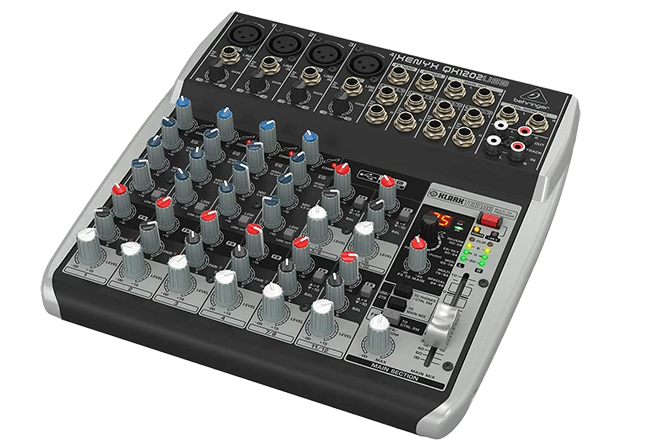The audio mixer (AudioMixingConsole) is a frequently used device in sound reinforcement systems and audio and video recordings. It has multiple inputs, and the sound signals of each channel can be processed independently, for example, it can be amplified and used for treble, midrange, and bass. Sound quality compensation can add charm to the input sound, perform spatial positioning of the source of sound, etc.; it can also mix various sounds with adjustable mixing ratio; it has a variety of outputs (including left and right stereo output, editing output, mixed Mono output, monitor output, recording output and various auxiliary outputs, etc.). Among them, mixers can be divided into analog mixers and digital mixers. What are their main functions and differences? Let’s take a look.
Take the digiMIX24, a 24-channel digital mixer from Yashini represented by Yihe Technology, as an example. Compared with traditional analog mixers, it has more obvious advantages. It can be configured in two modes: 24×8 AUX channels, or 24×4 AUX channels and 24×4 SUB channels, and 6× DCA fader groups. Users can flexibly choose and distribute signals. It also comes with an ASHLY* designed microphone amplifier. The digiMIX24 can be used as the control center of the system throughout the show. At the same time, a Dante module can be optionally used to send and receive network audio.
The main function of the digital mixer is to process audio signals, but the specific processing object is the digital signal that has been sampled, quantized, and encoded. These signals include audio and control signals. The digital mixer passes the update Perform program algorithm processing on a wide range of signals. The control circuits and signal processing circuits of the digital mixer are all digitized. The digital audio signals are transmitted in the form of files (or data streams) through the interface, and the knobs, switches, faders, etc. The control quantity is no longer the actual audio signal of the traditional analog mixer, but the control signal of the digital algorithm. The digital mixer’s signal processing is more flexible and precise, and the processing flow and effect display are more vivid.
For example, comparing only the dynamic range parameter, usually the dynamic range of an analog sound system is around 60 dB after a series of processing, while the internal calculation is performed on a 32-bit digital mixer, and the dynamic range can reach 168~192 dB. It can be said that the function of a digital mixer is similar to all the functions of an audio workstation, including hardware structure and software processing. The basic structure and module functions of a digital mixer. A digital mixer may vary greatly in appearance, but its basic structure mainly consists of the following parts. When viewed separately, it looks like a workstation that includes multiple input and output functional modules.
(1) I/0 interface is equivalent to the input and output signal interface of an analog mixer. Most digital mixers can also use the card slot of the analog interface to connect analog signal devices. Currently, these analog input ports are used to support The station has seamlessly transitioned to full digitalization, and the digital interface types include AES/EBU, S/PDIF and other standards.
(2) The signal processing part (DSP) is the core of the digital mixer and is responsible for various processing and processing of digital signals. It basically determines the function and quality of the entire mixer. (3) The control part of the mixer, which is the interface for human-computer dialogue, looks similar to the main body of the analog mixer. However, the components are only some control faders, knobs, indicators, etc., and they are not passed through. For audio signals, some mixers can also be connected to video monitors, keyboards, and mice. The user’s software control and hardware control have the same effect.
(4) The mixer host (computer control part CPU), combined with software operation, realizes the command execution, signal flow control and other functions of the entire mixer. (5) The power supply part is similar to the analog mixer, generally using a separate external power module.
As a first-generation product, analog mixers are indeed much inferior in functionality. The main function of the analog mixer is to process audio signals. The object is continuous analog audio electrical signals. In addition to completing general amplification, distribution, mixing, and transmission processing, it also has the following main functions: 1. Level and impedance matching ;2. Signal amplification and frequency equalization; 3. Dynamic processing; 4. Signal distribution and mixing; 5. Creating special effects as needed, sometimes with special processing through peripheral auxiliary equipment.
The difference between analog mixers and digital mixers

10
Oct

